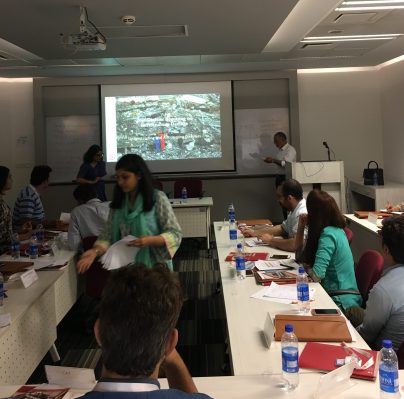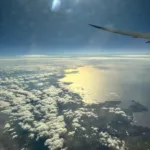
Most of us have travelled by road to Northern Areas alongside the twists and turns that characterise the spectacular banks of the river Indus. The lush scenery was not so pleasant in the aftermath of flooding in Pakistan.
“When we visited Swat (a popular destination along the route) in 2010, most bridges connecting the valley were found destroyed,” says Arif Bilgaumi, a well-regarded architect and urban planner based in Karachi.
Arif was alluding to the risk of debris from illegal construction such as dhabas, hotels and restaurants, along the river banks which gets dislodged during natural calamities and destroys everything in its wake. He was talking to reporters from a wide array of news organisations across the country attending a workshop on humanitarian reporting recently organised by the Centre of Excellence in Journalism at IBA in Karachi.
I was auditing the workshop for a day and found it personally exciting for two reasons. It brought me back to the ‘roots’, or a professional teaching environment in Pakistan, since I haven’t stepped foot in a local classroom in nearly ten years. Secondly, the training program was well thought out between experts who kept the sessions engaging and informative. Mind you I was not appraising the workshop for which I’m neither qualified or inclined. Think of my role as a participating observer.

It was refreshing to interact with marginalised media workers; a reporter from Quetta, the capital city of the restive Balochistan province, for instance told me how their head office in Karachi is often not interested in anything but terrorism and crisis related stories. As if people in Balochistan have no other life. Pakistanis of all shades and colours complain about similar treatment by the Western media.
The combination of expert knowledge and its professional delivery came in to stark focus on the issue of crisis reporting in areas where the state lacks infrastructure. A senior member of a development organisations talked about their role in creating national awareness. Aid is often the first organised collective response in such areas. Reporters of resource constrained media organisations often rely on ‘aid vehicles’ to reach effected areas.
Understandably, this part of the session was off record. Often these areas consists of non-state actors engaged in their own development efforts and agendas. The remaining session was on nurturing a ‘situational awareness’, safety, strategies to negotiate the demands of various stakeholders, traveling to and across the terrain and of course reporting in those conditions.
It was a welcome change to be in my country and talk constructively in Urdu on sensitive issues. It reminded me of a sharing session on the controversial Tiananmen Square Protest I attended in Hong Kong few years back.
The workshop program, classroom facilities and visiting experts wouldn’t be out of place in any of the conferences or universities outside Pakistan that I have had the pleasure of attending. Near the end instructors sneaked in an ‘anonymous questionnaire’ that was in fact a psychological well-being test presumably for reporters often working under stressful conditions.
By the end of the day I was nostalgic of my time as a sub-editor at The News. There is after all a charm and a sense of purpose when doing good old fashioned journalism; a powerful method of storytelling in the service of the public.











